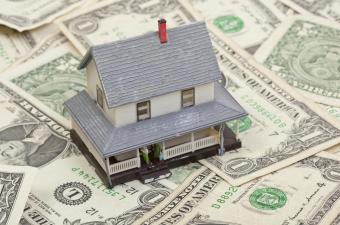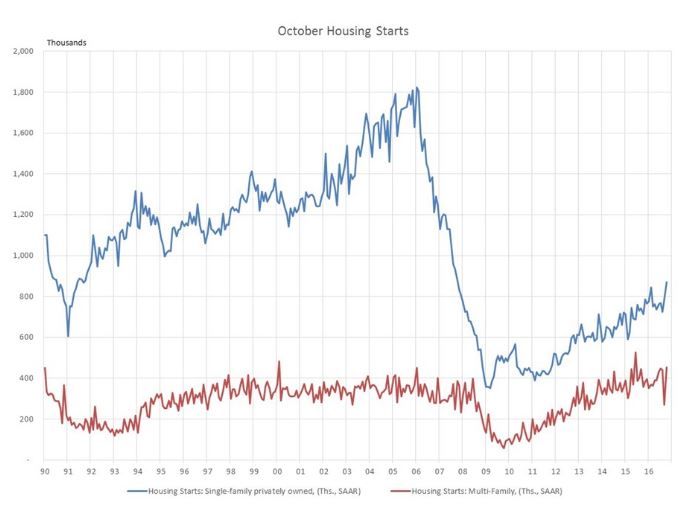 Housing starts in October made a huge leap forward compared to September and to a year earlier. HUD and the U.S. Census Bureau reported in the October New Residential Construction Report that starts last month numbered 1.3 million, more than 25 percent higher than October of 2015 and more than 23 percent above September’s figures.
Housing starts in October made a huge leap forward compared to September and to a year earlier. HUD and the U.S. Census Bureau reported in the October New Residential Construction Report that starts last month numbered 1.3 million, more than 25 percent higher than October of 2015 and more than 23 percent above September’s figures.
Completions were also up above 7 percent from September, and new residential construction was slightly up from the month prior.
But though starts were strong enough for Trulia to label them “statistically significant” and “a rarity,” chief economist Ralph McLaughlin is chasing his assessments with an appropriately cool bucket of water.
“To put October’s numbers into context, housing starts per household are about where they were in March 1993,” McLaughlin said.
In short, McLaughlin said, there is a lot of room for the housing starts sector to keep growing. “Controlling for the number of household in the U.S., housing starts are only about 66 percent of their 50-year average,” he said.
David Berson, chief economist at Nationwide, said that housing starts‒‒which are climbing at their strongest pace since 2007‒‒are being driven higher by improved household growth as the economy promotes further job and income gains.
“With improved employment and income prospects,” he said, “millennials are an expanding portion of housing demand as they move out of their parents’ homes‒‒increasingly to form families.”
He also said that the strength of the construction market now points to further strength in construction activity in coming months.
A big unknown, of course, is the coming of a new federal administration.
“A big question heading into 2017 is how homebuilders will fare under a Trump administration,” McLaughlin said. While we think some of his broader economic policies might hurt builders, such as immigration and trade policies that could restrict both labor supply and raw materials, we also think he’ll likely implement builder-friendly policies, such as infrastructure stimulus and financial sector reform.”
 That said, McLaughlin added that President-elect Trump could “implement a number of policies to help push the number of starts toward their historical average, but there’s a long way to go.”
That said, McLaughlin added that President-elect Trump could “implement a number of policies to help push the number of starts toward their historical average, but there’s a long way to go.”
New administration or not, Berson said he’s confident about the coming 12 months.
“Nationwide’s Health of Housing Markets report shows that the vast majority of regional housing markets should see sustainable growth over the next year,” he said.
Robert Denk, vice president for forecasting and analysis at the National Association of Home Builders, agrees, with some recent-historical perspective.
“The surge [in housing starts] in October was well ahead of the average pace of 768,000 so far in 2016, and reminiscent of the pop in February, which was followed by slower but still strong growth,” Denk said. “We expect single family starts to remain strong, if not at the October pace, through the end of the year and continue to strengthen in 2017.”
Click here to view the complete New Residential Construction Report for October 2016.

 theMReport.com Your trusted source for mortgage banking news
theMReport.com Your trusted source for mortgage banking news








